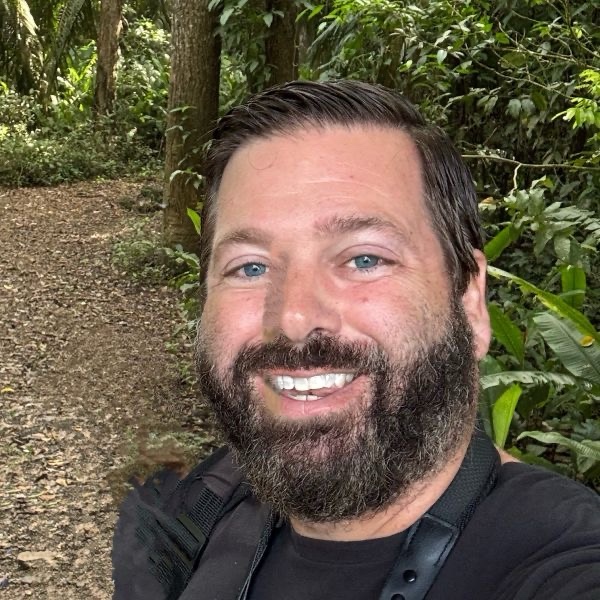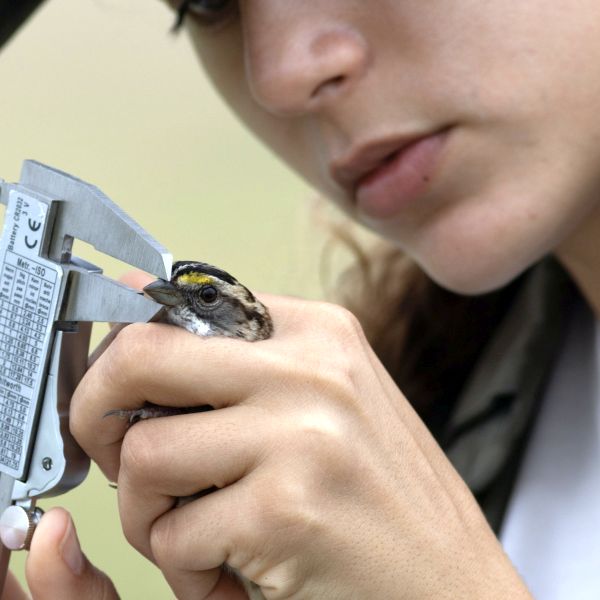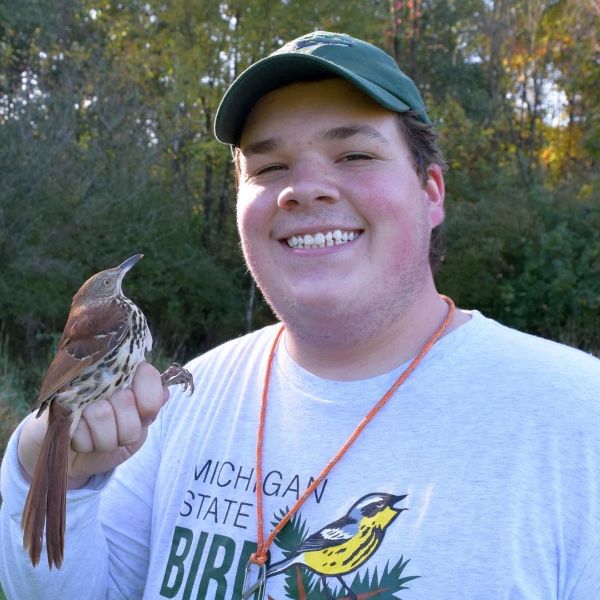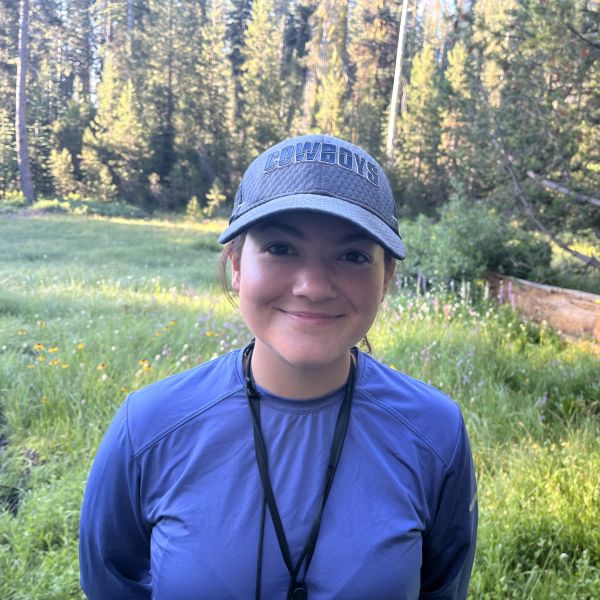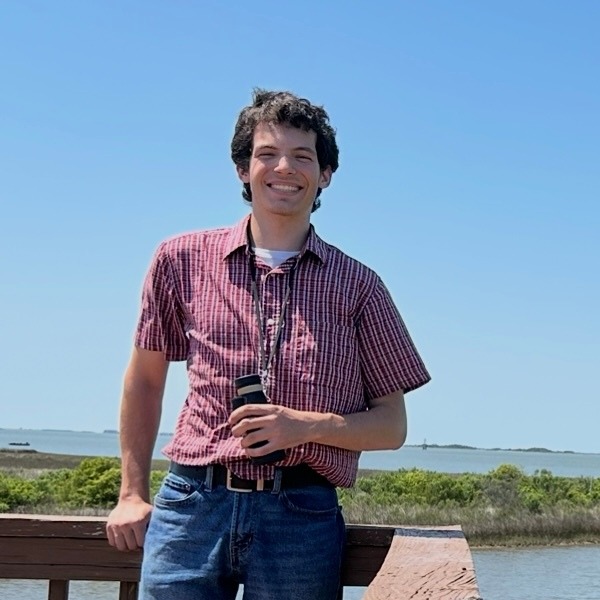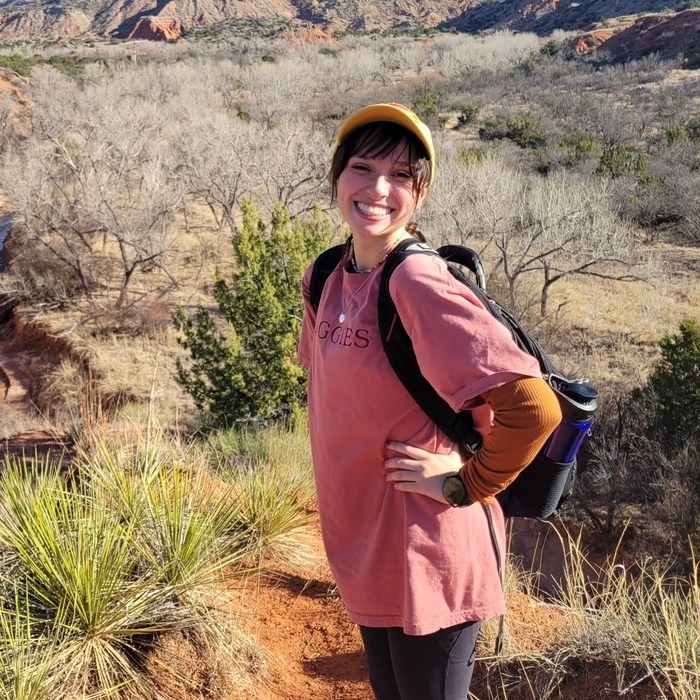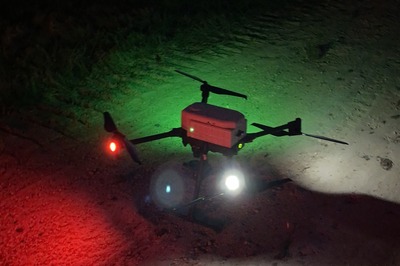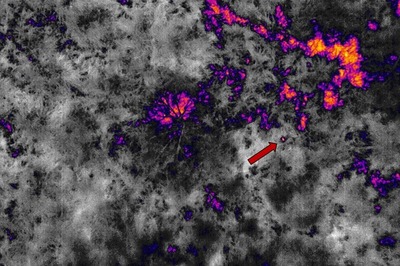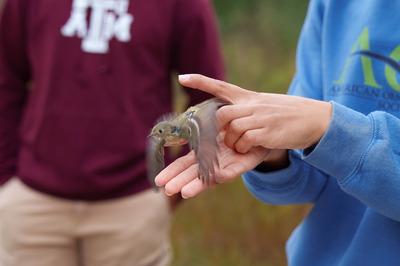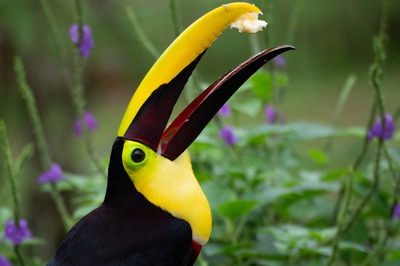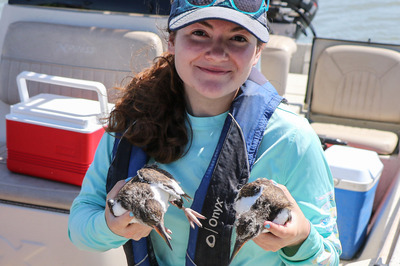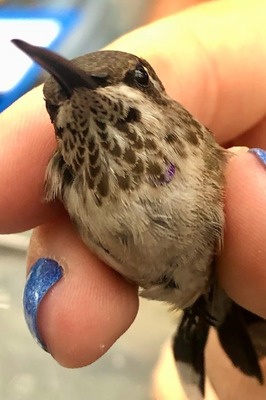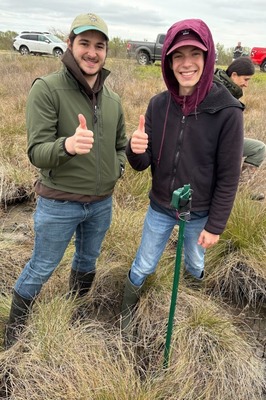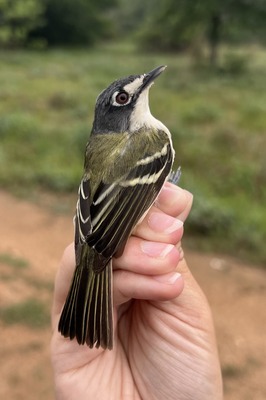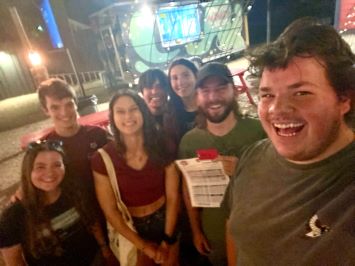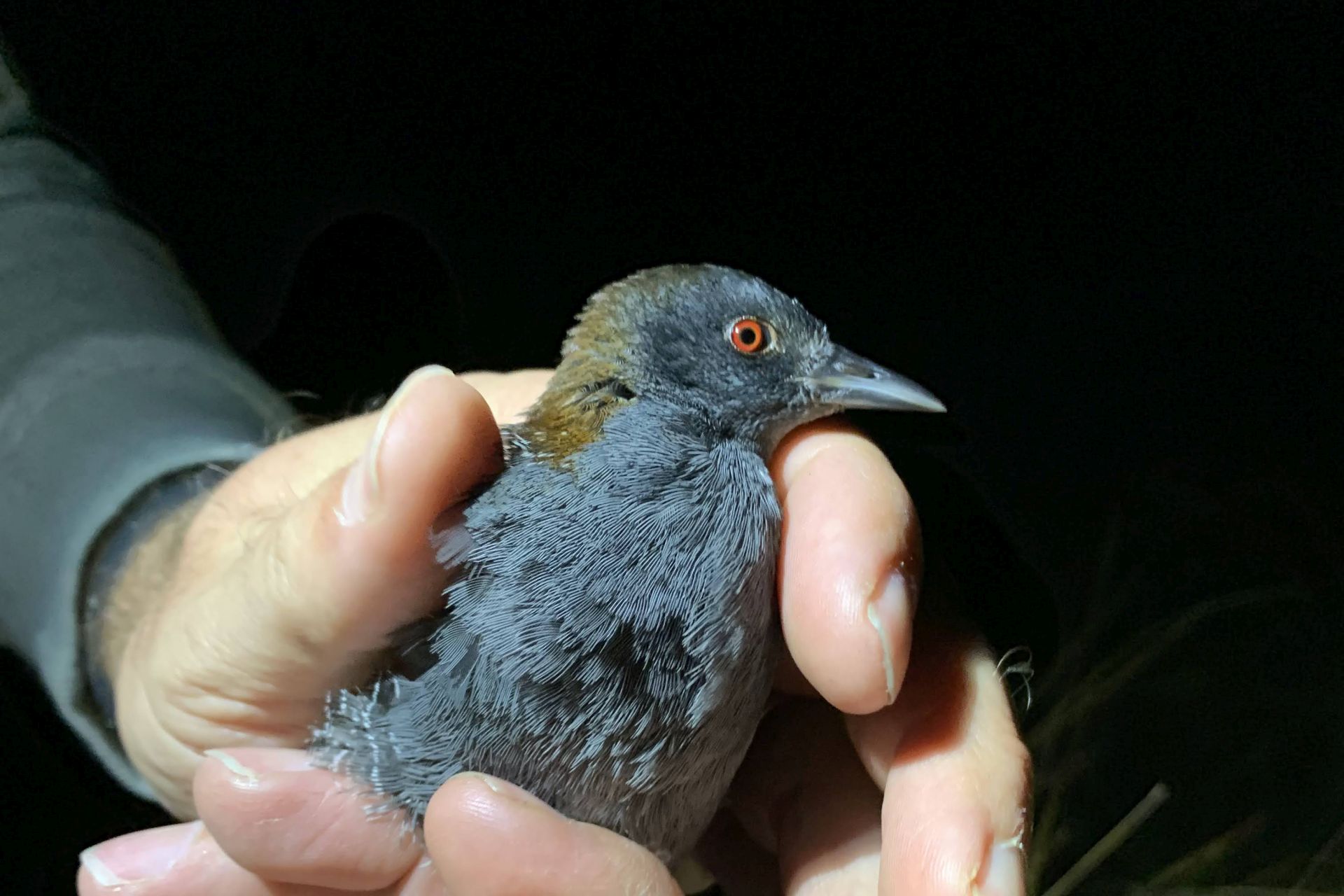
Welcome to the Butler Avian Ecology Lab
Get StartedAbout
The lab strives to foster a collaborative and inquiry-driven environment to understand and predict the ecological and evolutionary impacts of anthropogenic change, with a commitment to generating actionable solutions for species conservation and habitat management.
Our lab studies how animals interact with their environments across scales—from individual behaviors and physiological processes to species distributions and community dynamics. Much of our work centers on birds, particularly secretive and understudied species like the Eastern Black Rail and Yellow Rail, as we aim to inform effective conservation and management strategies for declining populations.
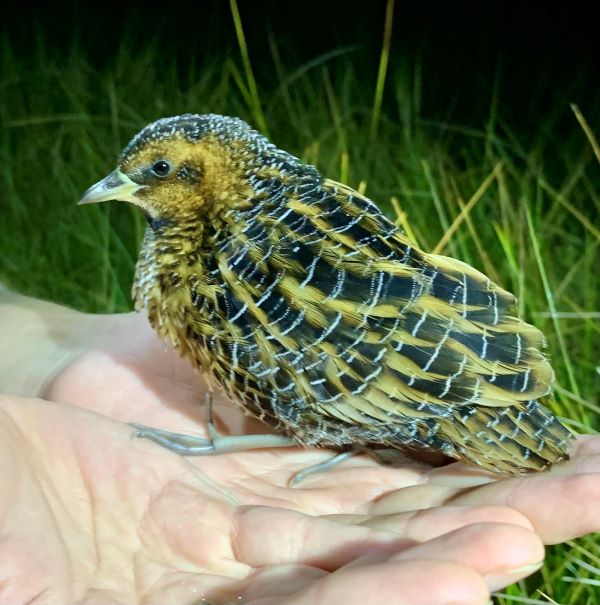
We use an integrative approach that combines field ecology, bioacoustics, molecular techniques (such as fecal DNA metabarcoding), and spatial modeling to understand where species occur, what they eat, how they use their habitat, and how they respond to environmental change. Recent projects have investigated the dietary ecology of marsh birds, predicted future range shifts under climate change, and assessed how land management practices (e.g., fire and grazing) influence habitat use.
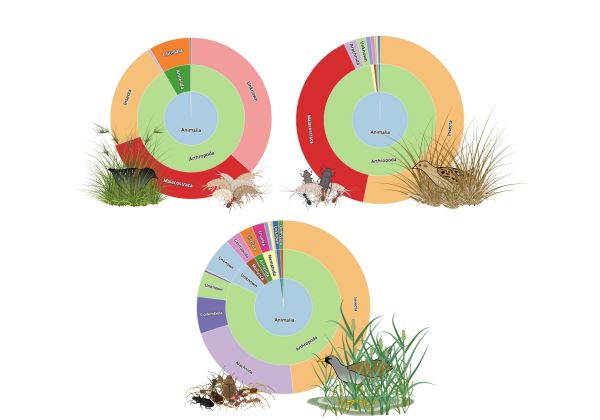
Our research is grounded in collaboration—with wildlife agencies, conservation organizations, and academic partners—and is committed to generating actionable science that supports biodiversity conservation. We are also deeply invested in training the next generation of scientists, with many undergraduates and graduate students contributing to our publications and field efforts.
In addition to birds, we’ve explored broader ecological questions involving fish, parrots, and palms, united by a common goal: understanding how species adapt to dynamic and often human-altered landscapes.
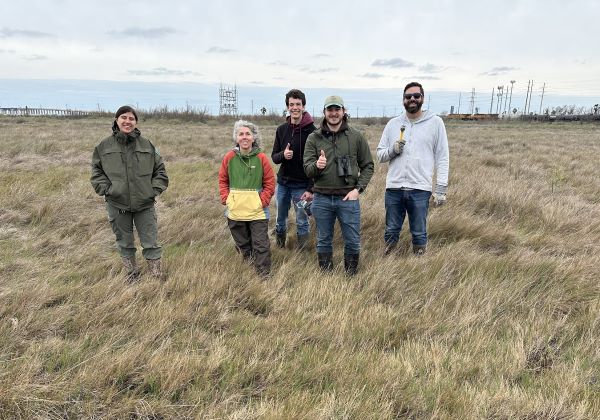
Team
Dr. Chris Butler
Chris is the PI in the lab. He obtained his PhD in Zoology from Oxford and his B.Sc. in Natural Resources from Cornell University. His research is motivated by understanding how anthropogenic modification affects species diversity and phenology (the timing of biological phenomena). He is also particularly interested in the potential of emerging technologies to study the ecology of challenging species.
Contact:
chris.butler@tamu.edu
ResearchGate |
ORCID
Tabitha Olsen
Tabitha Olsen is a PhD student who started in the Butler lab in early 2024. Her past work has focused on rail survey methodology, including optimization of the use of thermal imagery to detect Black Rails and Yellow Rails. Currently, she is interested in using fecal metabarcoding to explain community dynamics as it relates to diet with a focus on passerines. In her free time, she enjoys bird watching and recording nocturnal flight calls every chance she gets.
Contact:
tolsen@tamu.edu
ResearchGate |
ORCID |
eBird
Trevor Markwood
Trevor is a Master’s student in Biology who joined the Butler Lab in 2024 after completing a Bachelor’s Degree in Environmental Biology/Zoology at Michigan State University. At Michigan State, Trevor worked with numerous avian research projects, including starting up a Sedge Wren Ecology Study at Corey Marsh Ecological Research Center. Currently, he is studying how the management of woody vegetation impacts Black Rail occupancy across the Gulf Coast.
Contact:
tmarkwood@tamu.edu
ResearchGate |
ORCID
Aeris Clarkson
Aeris began as an undergraduate in the lab and will be starting her Master's in Fall 2025. Her research will focuses tracking wintering movements of American Oystercatchers along the Texas coast using satellite transmitters. She is passionate about birding and is interested in avian life histories and movement ecology.
Contact:
aerisclarkson@tamu.edu
ResearchGate |
ORCID |
eBird
Truman Gilliam
Truman is an Animal Science undergraduate in the Butler lab focusing on geospatial analysis. He has developed models predicting the potential range of warthogs in North America and helped research the impact of woody vegetation on Black Rail occupancy on the Gulf Coast. His key interests include herpetofauna, GIS applications, and veterinary anatomy.
Contact:
trumang@tamu.edu
ResearchGate |
ORCID |
eBird
Amelia Loveland
Amelia s an Ecology and Conservation Biology undergraduate in the lab focusing on the nocturnal migration movements of diurnal birds. She currently is collaborating with Tabitha Olsen on a project focused on tracking Western Kingbird’s nighttime migration activities using audio recording units. Her interests include learning more about birding and the implications of acoustical analysis on ornithological conservation efforts.
Contact:
aloveland@tamu.edu
Publications
2025
Butler, C.J., T.W. Olsen, S. B. McRae, M. N. Saleh, and M. Parks. (2025). Using fecal DNA metabarcoding to investigate the animal diet of black rails, yellow rails, and soras. Wildlife Society Bulletin 49:e1604. https://doi.org/10.1002/wsb.1604
Butler, C.J. and T.W. Olsen. (2025). Inventory of eastern black rail (Laterallus jamaicensis) to Inform Padre Island National Seashore prescribed fire management. Science Report. NPS/SR—2025/315. National Park Service. Fort Collins, Colorado. https://doi.org/10.36967/2311590
Nguyen, B., J. Messick, A. Rodger, V. Jackson, C. Butler, and A. Taylor. (2025). Lumping and splitting of distribution models across a biogeographic divide informs the conservation of an imperiled fluvial fish. Ecology and Evolution 15: e71315. https://doi.org/10.1002/ece3.71315
2024
Bartnicki, R. A. Snow, A. T. Taylor, and C. J. Butler. (2024). Use of multiple climate change scenarios to predict future distributions of alligator gar (Atractosteus spatula) in the United States. Environmental Biology of Fishes 107: 1475-1483.https://doi.org/10.1007/s10641-024-01654-8
Olsen, T. W., G. A. Apte, and C. J. Butler. (2024). Winter detection of an Eastern Black Rail (Laterallus jamaicensis jamaicensis) fledgling and of pair formation using thermal imaging. Waterbirds 47: 1-9. https://doi.org/10.1675/063.047.0107
2023
Butler, C. J., J. B. Tibbits, and J. K. Wilson. (2023). Black Rail occupancy and detectability in the Texas Mid-Coast National Wildlife Refuge. Waterbirds 46: 1-12.https://doi.org/10.1675/063.046.0102
Olsen, T. W., T. Barron, and C. J. Butler. (2023). Preliminary assessment of thermal imaging equipped aerial drones for secretive marsh bird detection. Drone Systems and Applications 11: 1-9. https://doi.org/10.1139/dsa-2022-0046
Butler, C.J., T. W. Olsen, J. K. Wilson, J. O. Woodrow, C. Johnson, and T. Barron. (2023). Yellow rail auditory detection during the non-breeding season. Journal of Wildlife Management e22368 https://doi.org/10.1002/jwmg.22368
2022
Butler, C. J. (2022). Little evidence of leaf damage to dwarf palmetto (Sabal minor; Arecaceae) during an unusual arctic outbreak. Ecologies. 3:267-274. https://doi.org/10.3390/ecologies3030021
Butler, C.J., T. W. Olsen, B. Kephart, J. K. Wilson, and A. A. Haverland. (2022). Interannual winter site fidelity for Yellow and Black Rails. Diversity. 14: 357. https://doi.org/10.3390/d14050357
2021
Butler, C. J. A. M. V. Fournier, and J. K. Wilson. (2021). Estimates of breeding season location for 4 mesic prairie bird species wintering along the Gulf Coast. Wilson Journal of Ornithology. 133: 177-189. https://doi.org/10.1676/19-00151
Bartnicki, J., R.A. Snow, A.T. Taylor, and C.J. Butler. (2021). An alternative, low-cost method to chill water for critical thermal minima trials. Journal of Applied Ichthyology. https://doi.org/10.1111/jai.14169
Bartnicki, J., R.A. Snow, A.T. Taylor, and C.J. Butler. (2021). Critical thermal minima of alligator gar (Atractosteus spatula, [Lacépède, 1803]) during early life stages. Journal of Applied Ichthyology. https://doi.org/10.1111/jai.14209
Butler, C. J., C. King, and D.L. Reinking. (2021). Do citizen science methods identify regions of high avian biodiversity? Diversity 13: 656. https://doi.org/10.3390/d13120656
Butler, C. J. (2021). Naturalized psittacines in the UK. In: Pruett-Jones, S. Naturalized parrots of the world. University of Chicago Press, pgs. 249–259.
2020
Butler, C. J. and M. A. Larson. (2020). Climate change winners and losers: the effects of climate change on five palm species in the southeastern USA. Ecology and Evolution 10: 1–18. https://doi.org/10.1002/ece3.6697
Marshall, D. and C.J. Butler. (2020). Potential distribution of the biocontrol agent Toxorhynchites rutilus by 2070. Journal of the American Mosquito Control Association 36: 131-138. https://doi.org/10.2987/8756-971X-36.3.131
2019
Butler, C. J. (2019). A review of the effects of climate change on chelonians. Diversity 8: 138.
2018
Vrla, S.C., B.K. McDonald, and C. J. Butler. (2018). Distribution and status of Mule Deer (Odocoileus hemionus) in Oklahoma: An updated analysis of harvest data. Southwestern Naturalist 63: 148-152.
2017
Butler, C. J. and H. Tran. (2017) Dwarf palmetto (Sabal minor) population increase in southeastern Oklahoma. Castanea 82:163-168
2016
Butler, C. J., B.D. Stanila, J.B. Iverson, P.A. Stone, and M Bryson. (2016). Projected changes in climatic suitability for Kinosternon turtles by 2050 and 2070. Ecology and Evolution 6: 7690–1705.
Butler, C. J., J.K. Wilson, S.R. Frazee, and J.F. Kelly. (2016). A comparison of the origins of Yellow Rails (Coturnicops noveboracensis) wintering in Oklahoma and Texas, USA. Waterbirds 39: 156-164
2015
Hucks, K.D., C. J. Butler, K.J. Locey, L.H. Locey, and P.W. Wilson. (2015). Prey diversity in Barn Owl pellets collected in Oklahoma. Proceedings of the Oklahoma Academy of Sciences 95: 1-8.
2014
Butler, C. J., J.K. Wilson, C.R. Brower, and S.R. Frazee. (2014). Age ratios, sex ratios, and a population estimate of Yellow Rails at San Bernard NWR, Texas. Southwestern Naturalist 59: 319-324.
York, E.M., C. J. Butler, and W. Lord. (2014). Global decline in suitable habitat for Angiostrongylus (=Parastrongylus) cantonensis: the role of climate change. PLoS One 9(8): e103831.
2013
Becker, E.C., S.H. Nguyen, R.E. Jones and C. J. Butler. (2013). Temperature affects the clarity of hummingbird feeder solutions. Bulletin of the Oklahoma Ornithological Society 46: 17-24.
Butler, C. J., W. Cresswell, A. Gosler, and C. Perrins. (2013). The breeding biology of Rose-ringed Parakeets Psittacula krameri in England during a period of rapid population expansion. Bird Study 60: 527-532.
Roy, C.L., C. J. Butler, and M.L. Haynie. (2013). Brownsville Common Yellowthroats maintain genetic diversity in a fragmented landscape. Wilson Journal of Ornithology 125: 402-406.
2012
Butler, C. J., E.A. Wheeler, and L.B. Stabler. (2012). Distribution of the threatened lace hedgehog cactus (Echinocereus reichenbachii) under various climate change scenarios. Journal of the Torrey Botanical Society 139: 46-55.
2011
Butler, C. J., J.L. Curtis, K. McBride, D. Arbour, and B. Heck. (2011). Modeling the distribution of the dwarf palmetto (Sabal minor; Arecaceae) in McCurtain County, Oklahoma. Southwestern Naturalist 56: 66-70.
Judd, E.R., C. J. Butler, and N. Batchelder. (2011). Hybridization between Black-chinned (Archilochus alexandri) and Ruby-throated (A. colubris) hummingbirds in Oklahoma. Bulletin of the Oklahoma Ornithological Society 44(3-4): 1-7.
2010
Butler, C. J., L.H. Pham, J.N. Stinedurf, C.L. Roy, E.L. Judd, N.J. Burgess, and G.M. Caddell. (2010). Yellow Rails wintering in Oklahoma. Wilson Journal of Ornithology 122: 385-387.
Patton, T., C. J. Butler, R. Bastarache, and D. Arbour. (2010). Trends from six years of spotlight surveys for American Alligators in southeastern Oklahoma. Proceedings of the Oklahoma Academy of Sciences 90: 83-92.
Wheeler, E.C., M.T. Reid, and C. J. Butler. (2010). Ecogeographical variables associated with the presence of Echinocereus reichenbachii (Terscheck ex Walp) ssp. (Cactaceae) in the Wichita Mountains Wildlife Refuge. Proceedings of the Oklahoma Academy of Sciences 90: 117-122.
2009
Judd, E., C. J. Butler, C. Roy, L. Pham1, N. Burgess1, and E. Davis1. (2009). Mapping the distribution of Eurasian Collared-Doves (Streptopelia decaocto), White-winged Doves (Zenaida asiatica), and Inca Doves (Columbina inca) in Oklahoma County. Proceedings of the Oklahoma Academy of Sciences 89: 79-86.
Ledbetter, D. and C. J. Butler. (2009) Western Kingbird predation of a Black-chinned Hummingbird. Bulletin of the Oklahoma Ornithological Society 42: 16.
Pham, L.L., C. Roy, E. Davis, and C.J. Butler. (2009). Monk Parakeet nesting attempts in Oklahoma. Bulletin of the Oklahoma Ornithological Society 42: 17-18.
Shwartz, A., D. Strubbe, C.J. Butler, E. Matthysen, and S. Kark. (2009). The effect of enemy-release and climate conditions on invasive birds: a regional test using the Rose-ringed parakeet (Psittacula krameri) as a case study. Diversity and Distributions 15: 310-318.
2008
Locey, K.J., C. J. Butler, and D.L. Martin. (2008). Ctenosaura pectinata (Spiny-tailed Iguana) population status. Herpetological Review 39: 348-349
2007
Butler, C. J., D. Ledbetter, N. Batchelder and G. Batchelder. (2007). Black-chinned Hummingbirds breed in Grady County. Bulletin of the Oklahoma Ornithological Society 40: 13-16.
2005
Lorenz, S., C. J. Butler, and J. Paz. (2005). First documented nesting record of the Gray-crowned Yellowthroat (Geothlypis poliocephala) in the United States in over a century. Wilson Journal of Ornithology 118: 574-576.
Butler, C. J. (2005). Parrots in the continental United States and United Kingdom: Past, Present, and Future. Journal of Avian Medicine & Surgery 19: 142-149.
2004
Butler, C. J. and A. Gosler. (2004). Sexing and aging Rose-ringed Parakeets Psittacula krameri in the UK. Ringing & Migration 22: 7-12.
2003
Butler, C. J. (2003). The disproportionate effect of climate change on the arrival dates of short-distance migrant birds. Ibis 145: 484-495.
Butler, C. J. (2003). Species status review: Monk Parakeets in Oregon. Oregon Birds 29: 97-100.
Butler, C. J. (2003). Rose-ringed Parakeets in the UK. PsittaScene 15: 8-9.
2002
Butler, C. J. (2002). Breeding parrots in Britain. British Birds 95: 345-348.
Butler, C. J., Hazlehurst, G., & Butler, K. (2002). First nesting by Blue-crowned Parakeet in Britain. British Birds 95: 17-20.
Opportunities
We welcome inquiries from prospective graduate and undergraduate students interested in avian ecology and conservation. Please review the appropriate section below and reach out if you are interested in joining our team.
Graduate Students - PhD in Ecology and Evolutionary Biology (EEB)
We are always interested in recruiting graduate students. In general, the application deadline for the EEB program at TAMU is 1 December. Well suited candidates are those that are self-motivated and have an interest in ornithology and/or ecology.
We typically have funding to bring on one new graduate student each year. Ideal candidates are collaborative and passionate about avian ecology, conservation, and field-based research.
Applicants should meet the following criteria:
- Strong academic background (GPA ≥ 3.5)
- Research experience related to birds
- Demonstrated communication skills (e.g., posters, presentations, publications)
- Teaching and/or mentoring experience is a plus
- International students only: TOEFL score of 100 or higher
If you’re interested, please email me with a brief introduction, your CV, and a one-page statement of interest. I’m also happy to help students pursue external funding opportunities such as the NSF GRFP.
Graduate Students – M.Sc. in Biology
We are also interested in recruiting M.Sc. students through the Biology program at TAMU (Ecology and Evolutionary Biology track). The application deadline is typically 1 March.
Master's students are typically self-funded. However, we usually are able to support them on TAs (Teaching Assistantships) and we also provide the funding for research expenses. Successful applicants are enthusiastic about avian ecology and conservation, and motivated to gain experience in field-based research.
Applicants should meet the following criteria:
- Strong academic background (GPA ≥ 3.5)
- Research experience related to birds
- Demonstrated communication skills (e.g., posters, presentations, publications)
If interested, please email me with a short introduction, your CV, and a one-page statement of interest. I encourage M.Sc. students to consider applying for funding opportunities and will support these efforts.
Undergraduate Students
We are always happy to have undergraduates join our lab. Students typically start by assisting with ongoing projects, which may involve field work, lab work, or data analysis depending on the time of year and your interests.
If you’d like to get involved, please email me and include answers to the following questions:
- Your name, major, and expected graduation date
- Relevant coursework and grades
- Any previous lab experience
- Why you’re interested in joining our lab
- Your future goals
Classes
Dr. Butler teaches BIO 214, BIOL 318, BIOL 357, BIOL 291/491
BIOL 214 - Genes, Ecology and Evolution
Credits 3. 3 Lecture Hours. A genetically-based introduction to the study of ecology and evolution; emphasis on the interactions of organisms with each other and with their environment. Prerequisite: BIOL 112.
BIOL 318 - Chordate Anatomy
Credits 4. 3 Lecture Hours. 3 Lab Hours. Classification, phylogeny, comparative anatomy, and biology of chordates; diversity, protochordates, vertebrate skeletons, shark and cat anatomy studied in laboratory. Prerequisite: BIOL 214 or approval of instructor.
BIOL 357 - Ecology
Credits 3. 3 Lecture Hours. Analysis of ecosystems at organismal, population, interspecific and community levels. Prerequisite: BIOL 214 or approval of instructor.
BIOL 400 - Costa Rica Tropical Ecology
Credits 6. Advanced field-intensive course conducted at multiple biological field stations located throughout Costa Rica; exposure to a wide variety of tropical ecological principles using largely observational and some sampling techniques; experience with amazing diversity of wildlife and habitats from hot, humid low land rainforests to the high elevations of the Talamanca páramo; development of a variety of natural history skills needed to understand the complex interactions of plants and animals in tropical environments; requires detailed journal of ecological principles observed while in Costa Rica to be used as basis for final written report; opportunities to experience the unique and friendly culture of one of Central America's most successful countries and discover how anthropogenic activities affect biodiversity.
BIOL 291/491 - Undergraduate Research
Credits 0 to 4. Active research of basic nature under the supervision of a Department of Biology faculty member. May be taken two times. BIOL 291 is for freshman/sophomore standing, while BIOL 491 is for junior/senior standing Prerequisite: Approval of departmental faculty member.
Learn MoreContact
Physical Address
307 Butler Hall, 525 Lubbock Street, College Station, TX 77840
Mailing Address
3258 TAMU, College Station, TX 77843
Call Us
+1 979 862 3403
